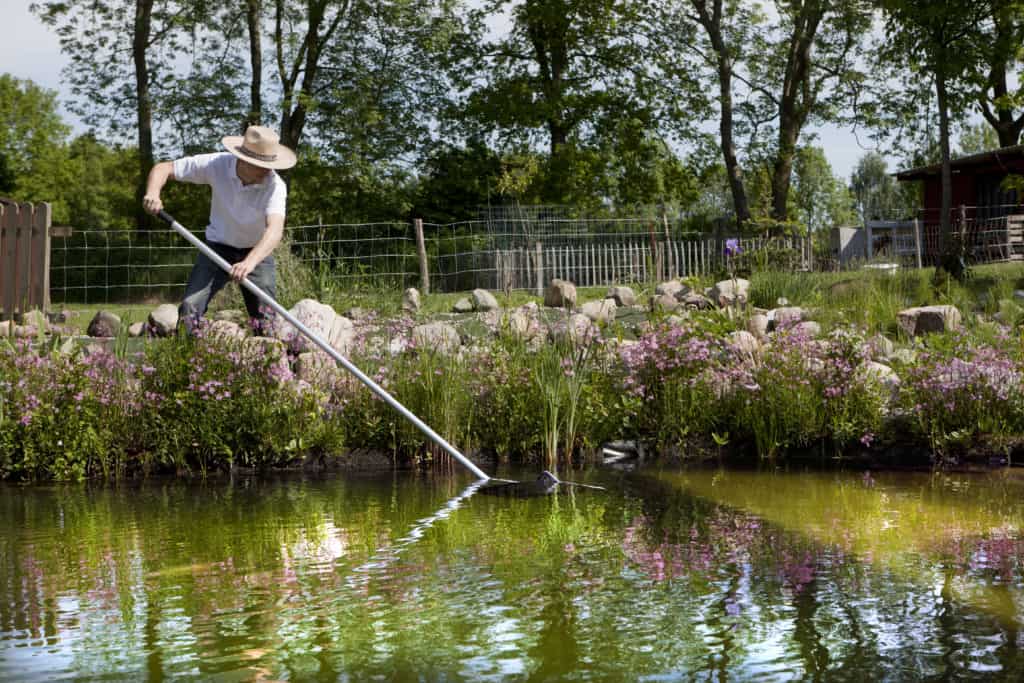Now that we’ve covered all your potential options for fish pond substrates, how is the best way to go about cleaning the bottom of your fish pond? Here’s the full checklist of tasks for all ponds to keep up with on a daily/weekly/monthly/yearly basis.
If you have rocks on the bottom of your fish pond:
To prevent the buildup of dangerous anaerobic bacteria, stir your substrate weekly. If the rocks are larger, use a pond vacuum to suck the muck out from the bottom. To make the job easier, start to scoop out the rocks. This is the main reason “Aquascape” ponds are likely doomed to fail.
If you have a concrete bottom or liner:
Gently sweep any debris and algae towards your bottom drain a few times a week. If you do not have a bottom drain, use a pond vacuum to suck up all the debris after it settles post-sweep. Be careful with liners not to scrub too vigorously or else you may rip a hole!
If you don’t ever clean the bottom of your fish pond:
Time to start! If you think there is more than a few inches of mud at the bottom of your pond, get your fish out of the pond and in a temporary holding tub just in case you have pockets of hydrogen sulfide. Dig down until you hit the liner or concrete bottom. Try to keep up with cleaning on a weekly or at least monthly basis to keep it from being such a chore!
If you do not have a bottom drain:
Never fear! Even if you didn’t add a bottom drain when you put in the pond, one can be retrofitted. Bottom drains make cleaning ponds so much easier! Contact your local pond professional to get one added to your pond today!
If someone else cleans the bottom of your fish pond:
Make sure you have properly vetted your fish pond maintenance company. They are not all created equal. We have collected the most common warning signs to make sure your maintenance company knows what they’re doing.


Pingback: Comment éliminer Les Feuilles De L'étang
Pingback: Pond Vacuum Cleaner - Vacuum Idea